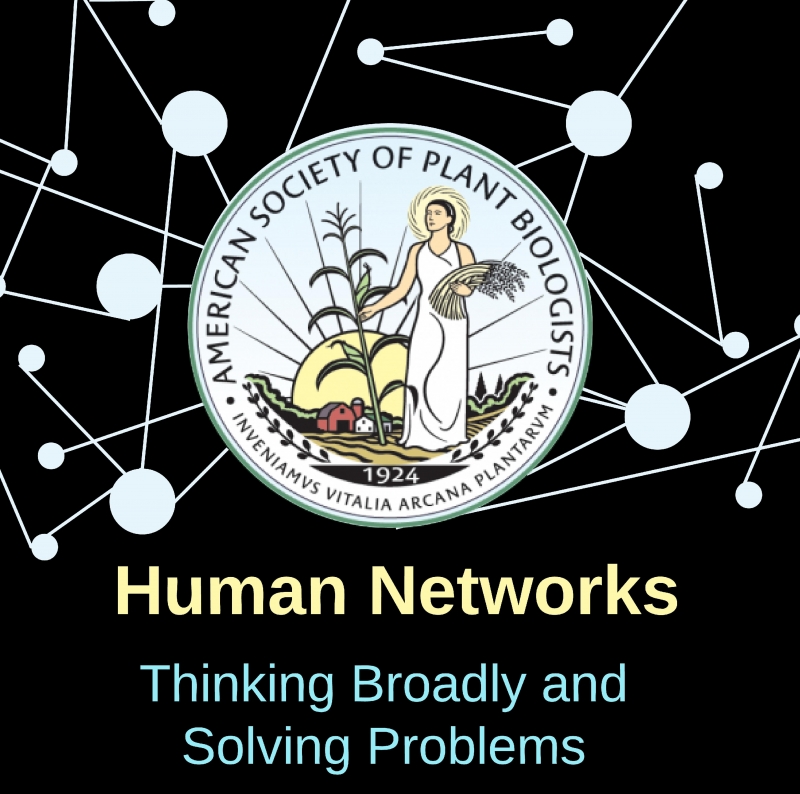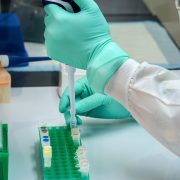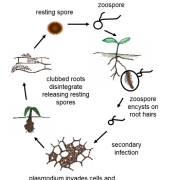Big Challenges Require Broad Thinking
 Rob Last’s fifth president’s letter
Rob Last’s fifth president’s letter
This continues the experiment of publishing the President’s Letter as part of a collection of essays and other resources related to the topic (https://community.plantae.org/path/5277540829945137009). Please also have a look at the previous collections on the future of not-for-profit science organizations (http://bit.ly/futurenonprofitscience), member security (http://bit.ly/SecuringFuturePl…) and future careers (http://bit.ly/NextGenerationCa…), and send your feedback about these topics and collections to [email protected] or @Biokid001 on Twitter.
As a kid growing up in a suburb of New York City, neither biology in general nor plants specifically were a major fascination until 1976, when college at Ohio Wesleyan University brought me into contact with organismal biology. While pursuing a chemistry major, I minored in both botany and zoology. These departments were highly organismal in focus, and thus we studied animal behavior, ornithology, plant taxonomy, and mycology. In this molecular biology–emergent time, even the evolutionary biology curriculum had no nucleotides and few protein sequences. In retrospect, it is apparent how lucky I was to be able to learn chemistry in one department and organismal biology in two others.
Graduate school at Carnegie Mellon and postdoc research at MIT opened my eyes to the predominance of molecular biology and model organism genetics in the biology of the 1980s. It made sense: you could do so much with Escherichia coli, baker’s yeast, Drosophila, mouse, and Arabidopsis thaliana.
Arriving at Boyce Thompson Institute at Cornell University in 1989 as one of the first “Arabidopsis people” in Ithaca, I encountered colleagues openly skeptical of the focus on one species. What about the hundreds of millions of years of evolutionary innovations that you couldn’t study in only one species or genus? Many in my cohort and future generations, however, resisted the siren call of biological diversity in favor of the amazing things that you could do with model or reference species, thanks to genetic resources, a large community of like-minded and generous colleagues, and annual meetings. This devotion to model organisms propelled science, bringing us to where we are now, with thousands of sequenced genomes and transcriptomes, along with deep insights into plant development, signaling, and metabolism. It also benefits researchers working in agriculture, ecology, and evolutionary biology.
But trying to understand the complexity and commercial potential of all plants by studying a single species is like setting out to understand the rules of human relations by observing your family, or drawing conclusions about the world’s cultures while living in one small town. These are fine—and perhaps even necessary—ways to start, but there is so much more that can be done and learned by expanding your study systems.
Despite remarkable conceptual and technical advances of the past 30 years, the plant biology community that many ASPB members align with does not take advantage of opportunities to understand the full range of biological complexity and to apply this knowledge to hard questions. Sometimes the road to breadth starts with simple behavioral changes. My home institution of 15 years—Michigan State University (MSU)—has a world-renowned community of highly collaborative plant biologists and plant scientists. However, we are missing opportunities to learn from each other because not many of the molecular and cellular biology practitioners and eco-evo scientists regularly attend each other’s seminar series. This is a shame, given the rich opportunities for finding new phenotypes and interactions for “us” to probe molecularly, and the emerging information on molecular networks for “them” to study using their lens of adaptation and evolution. Together we are a much stronger scientific community, and to achieve that strength we have to learn about—and appreciate—each other’s science. Avoiding learning about the big questions and approaches of other disciplines also gives our students and postdocs the idea that avoiding breadth is good training practice, and it most assuredly is not.
This need for more diverse training is a broad phenomenon, and certainly not confined to the MSU campus. As a participant in the ASPB-affiliated Plant Sciences Research Network 2019 Plant Summit this winter, I had the pleasure of interacting with a wide range of scientists, educators, and policy makers representing agriculture, plant ecology, and evolutionary and molecular biology. Our goal was to develop a vision for the next decade of Plant Sciences writ broadly, with an emphasis on big and cross-cutting questions and approaches to benefit society. We made good progress, but this broadly knowledgeable group of people could have spent its discussion time more effectively. Intervals that should have been spent developing a broad and deep consensus vision for research, career development, and funding advocacy were devoted to defending turf and justifying specific worldviews. Although the “forming, storming, and norming” process that this group went through is perfectly normal (as described by Bruce Tuckman in 1965), such communities best use their time on Tuckman’s fourth step: “performing.”
Broadly trained scientists who are accustomed to working with people from diverse groups will naturally push our community toward cross-cutting science that solves problems. They are less likely to view disciplines as boundaries, moving away from storming and norming into performing when placed into a new group of problem solvers. Broadly trained people are faster at seeing patterns in data and developing multidisciplinary approaches to hard problems: perhaps this is because more of the collaborative concept space is located in their own brains. Groups of people who have experienced diverse cultures more effectively communicate with those from other disciplines because they have spent their professional and personal lives developing strategies for understanding, and being understood by, others.
As educators and learners, we have the opportunity to help other scientists achieve broad training across the boundaries of disciplinary culture. We can nurture collaboration and mentor students and colleagues by learning what motivates them and meeting them where they are, rather than where our training took us. At the same time, we must teach each other how to evaluate our audience’s needs and communicate our science to those not familiar with the intricate details of our favorite developmental cascade, signal transduction pathway, or metabolic network. We can create institutional structures that are interdisciplinary and next-gen training oriented and help our universities, colleges, institutes, and companies move away from disciplinary silos and toward organizations configured for solving the problems of the future.
The Plant Biology 2019 (https://plantbiology.aspb.org/) and satellite Plant Synthetic Biology
(https://plantsyntheticbiology.org/) meetings in San Jose, California, will provide varied opportunities to experience cross-disciplinary research and think about how to effect organizational and cultural change. The major symposia exemplify this spirit. For example, the President’s Symposium features topics related to developing the workforce through mentoring and early research experiences and dissecting complex physiology through transdisciplinary research. The Future of Food and Agriculture symposium will cover artificial meat and development of sustainable breeding and food production. Drop by the ASPB Pavilion for conversation circles on topics including putting together a training program, developing strategies to effect change, getting involved in science policy, and commercializing your ideas and results. A suggestion: attend a conversation circle or workshop that is outside your current interests. Last, but not least, register and attend Plant SynBio 2019, which starts with the final major symposium of Plant Biology 2019 and continues through Friday, August 9. See you in SJ!
Click here to view additional articles in the “Human Networks, Thinking Broadly and Solving Problems” Collection










Leave a Reply
Want to join the discussion?Feel free to contribute!